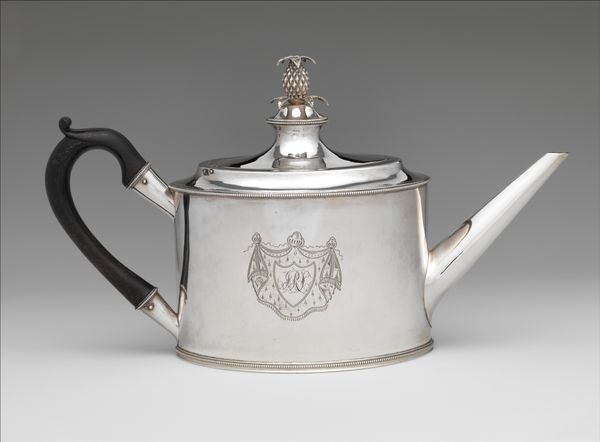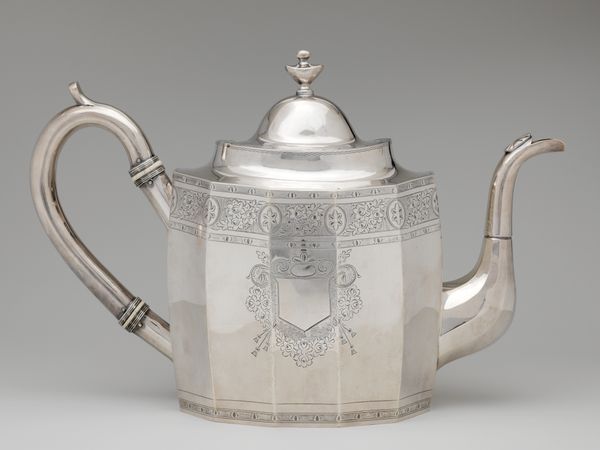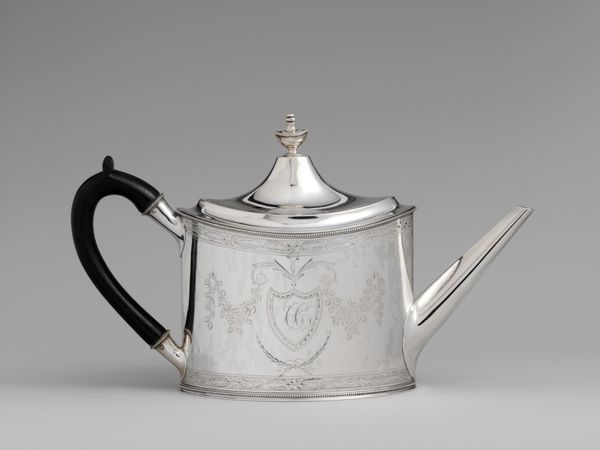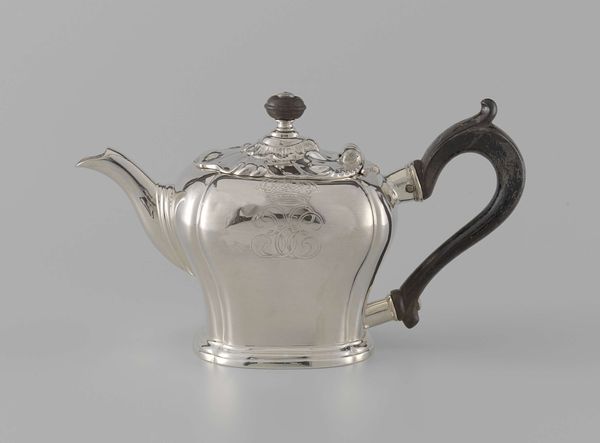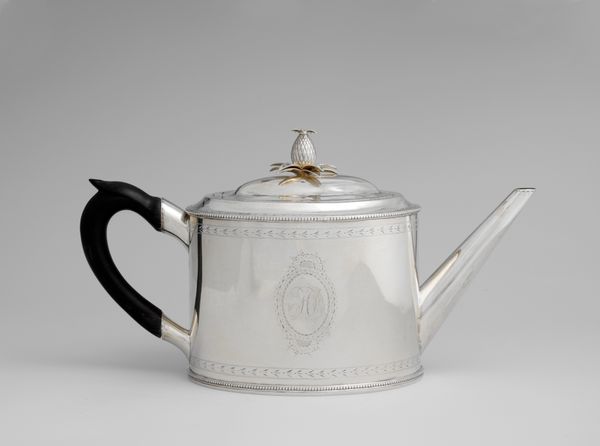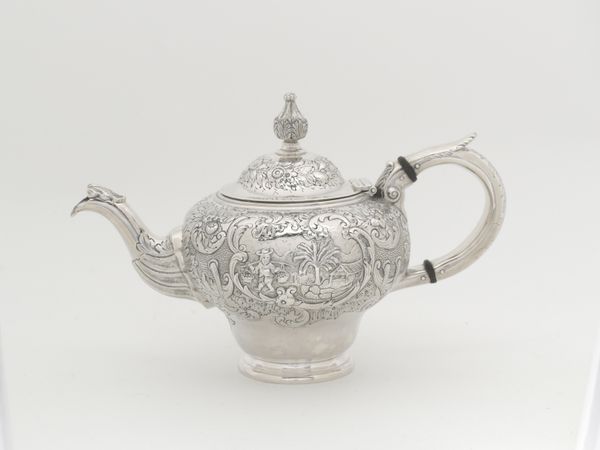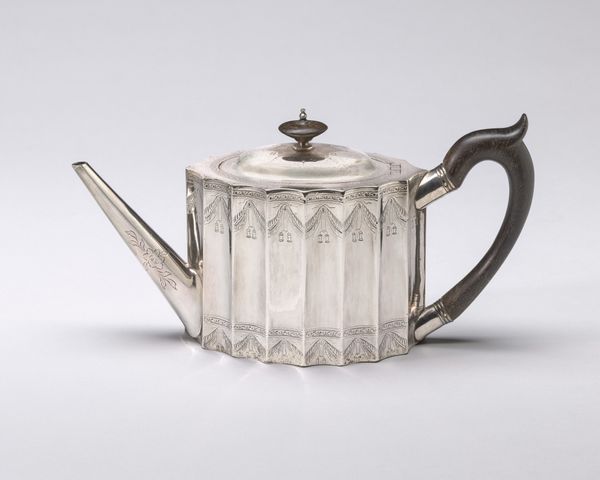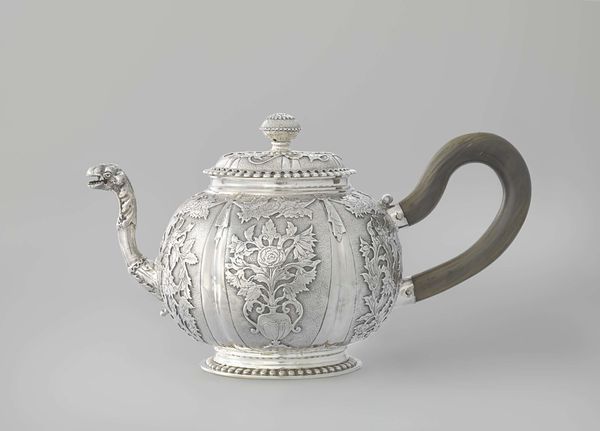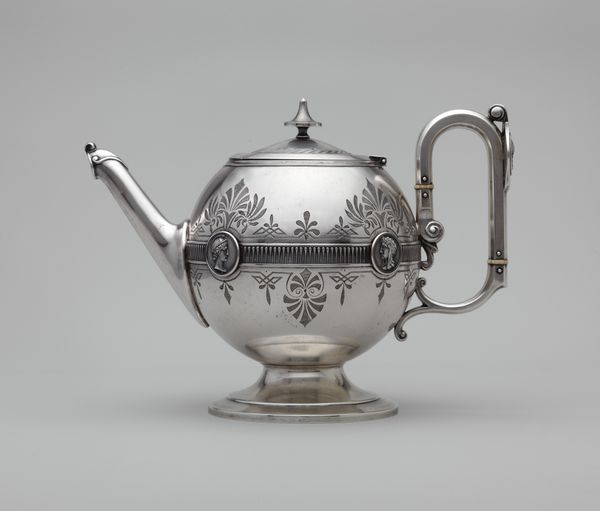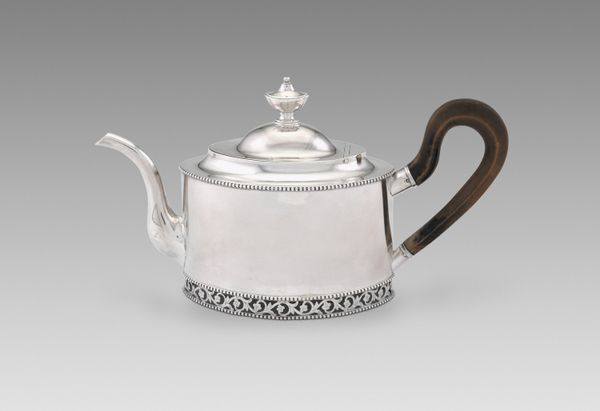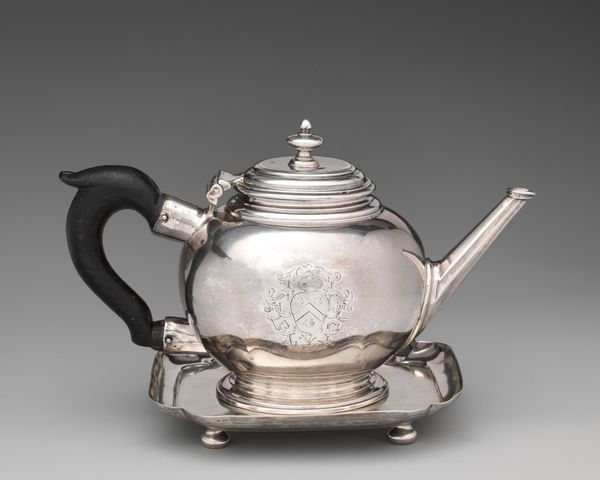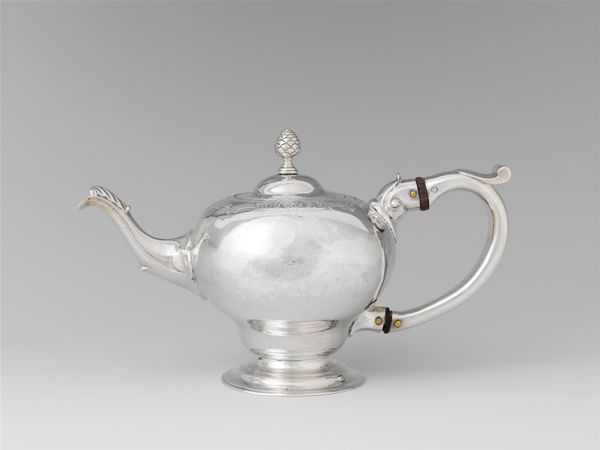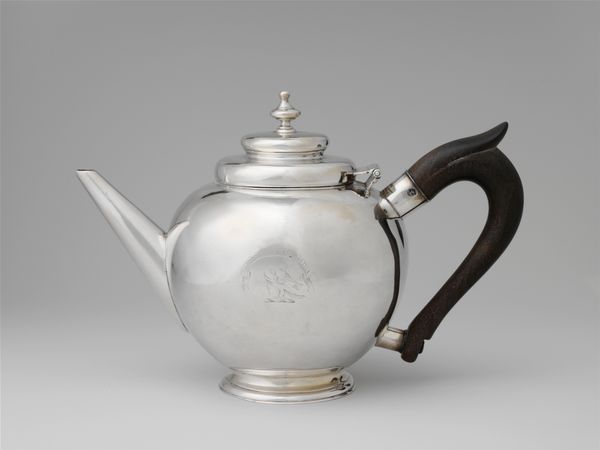
silver, metal
#
neoclacissism
#
silver
#
metal
#
geometric
#
united-states
Dimensions: 6 3/4 x 12 x 4 1/2 in. (17.1 x 30.5 x 11.4 cm) 22 oz. 6 dwt. (693.2 g)
Copyright: Public Domain
Curator: Here we have a silver teapot, crafted by Robert and William Wilson, sometime between 1825 and 1835. It exemplifies the Neoclassical style. Editor: It strikes me as simultaneously elegant and rigid. The geometry feels very controlled, but the ornate details hint at something softer. Curator: Absolutely. Consider the socio-political climate of the era. Neoclassicism, with its references to classical antiquity, served as a visual language that lent itself well to early nation building within the United States, providing a veneer of sophistication while also nodding towards democratic ideals rooted in Greek philosophy. This piece blends form and utility. It echoes ideals through its craftsmanship. Editor: Tell me more about the craftsmanship and those labor implications. I'm thinking about the silversmithing itself. Look at the hammering and the joining of the sections—that seamless spout. It shows great mastery of the materials, silver being precious and workable yet prone to tarnish and denting. Curator: Precisely. Think about the labor that went into sourcing the silver, the skill required for the delicate engraving, the polishing. Who benefited from this beautiful, functional object, and who toiled to create it? What kind of social structures facilitated it? And what were their working conditions? The identity of the individuals involved in this craft is what remains anonymous. Editor: Right. I'm also drawn to this tension between industrialization and craft that the date implies. Even with emerging manufacturing techniques, silversmithing would have remained a predominantly hand-crafted process. It gives it another dimension: one of carefully, skillfully executed artistry rooted in tradition. This pushes us to also consider questions of authenticity and value within that time frame. Curator: And who gets to define that value? This object acted as a symbol of refined domesticity, probably in a well-to-do household that had disposable income, displaying economic power. What implications did this have? Editor: Reflecting on its functionality and ornamentation, the teapot makes me want to examine assumptions we often make about utilitarian objects. The way function and high level of craft blend. Curator: Yes, let's consider our place within these histories of craft. This is not just a pretty thing. This embodies societal contexts and economic practices worth thinking about as we use, display, and interact with objects daily.
Comments
No comments
Be the first to comment and join the conversation on the ultimate creative platform.
